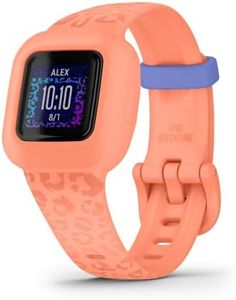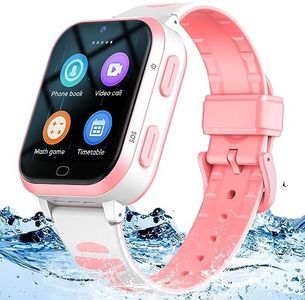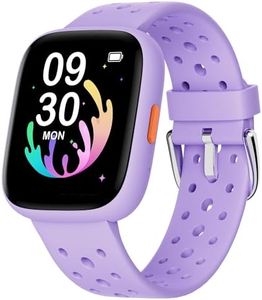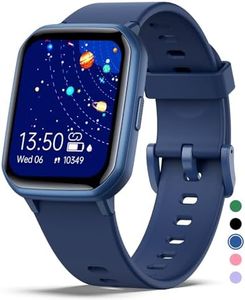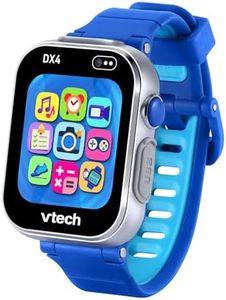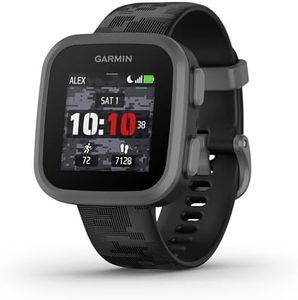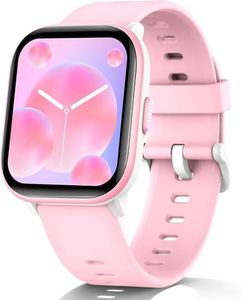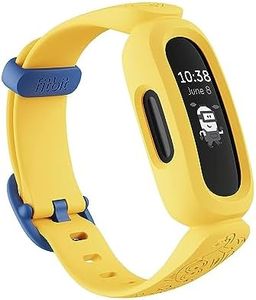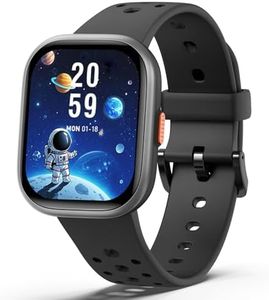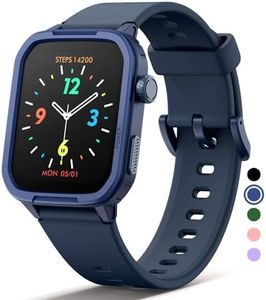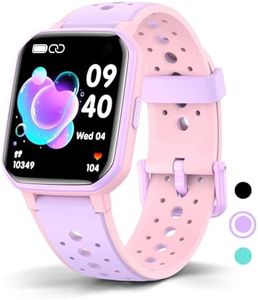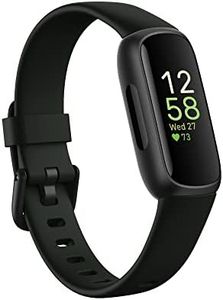We Use CookiesWe use cookies to enhance the security, performance,
functionality and for analytical and promotional activities. By continuing to browse this site you
are agreeing to our privacy policy
10 Best Kids Activity Trackers
From leading brands and best sellers available on the web.Buying Guide for the Best Kids Activity Trackers
When choosing a kids activity tracker, your main goal is to find a device that helps encourage physical activity while being convenient and fun for your child to use. Children need something comfortable, durable, and easy to operate, as well as a tracker that captures the right types of activities. Think about your child's everyday routine, the activities they love, and what kind of feedback will most effectively motivate them. Safety, privacy, and age-appropriate features should always be a priority. Read about the key specs to help you make the best choice.Durability and Water ResistanceThis spec refers to how well the activity tracker can withstand drops, bumps, and exposure to water. With kids being naturally active and sometimes rough on their belongings, a tracker should be resilient. Look for devices labeled as water-resistant or waterproof for kids who swim or are likely to splash around. Some products offer basic splash-resistance for rain or handwashing; others can handle full submersion for swimming. Think about your child's activities: swimmers and outdoor adventurers need a higher level, while occasional splash-proofing might suffice for calmer kids.
Age-Appropriate FeaturesThis spec describes the games, challenges, designs, and parental controls intended for particular age ranges. Younger children benefit from simple displays, easy-to-use buttons or touchscreens, and reward-based systems. Older kids might want more advanced features like step goals, heart rate monitoring, and smartphone notifications. Choose one with features that match your child’s maturity and interests so it's engaging but not overwhelming or overly complicated.
Battery LifeBattery life means how long the device can operate before needing to be recharged or refitted with a new battery. For kids, longer battery life is a convenience—you won't have to remind them to charge as often, and it keeps interruptions to a minimum. Some trackers use replaceable coin batteries that last months, while others need recharging every few days. If your child tends to forget to charge devices, opt for a longer-lasting option, but for kids who love gadgets and charging isn't an issue, a rechargeable battery might offer more features.
Activity and Sleep TrackingActivity and sleep tracking refers to the types of movements and rest the device can detect. Basic options include steps, active minutes, and sometimes sleep duration. More advanced devices can recognize specific activities like running, cycling, or swimming, and monitor sleep quality. Consider the primary reason for the tracker: if it's to encourage general movement, a step counter and simple activity goals may be enough. If you want to track sleep habits or monitor several types of activities, look for a model with expanded tracking.
Comfort and FitComfort and fit are about how well the tracker sits on a child’s wrist and whether the band is adjustable or available in kid-friendly sizes. A comfortable, secure fit encourages kids to wear the device regularly. Look for adjustable bands and materials that are gentle on the skin, especially if your child has sensitivities or will wear it all day and night. The right fit prevents the device from slipping off or being bothersome, making it more likely to stay on and accurately record activity.
Parental Controls and SafetyParental controls and safety features help you supervise your child’s device usage and keep their data private. These can include restriction settings, app approvals, emergency contacts, or ways to monitor activity remotely. For younger children or those new to technology, robust parental controls guarantee peace of mind. If privacy is your main concern, look for trackers with minimal data sharing and parental access to app controls.
